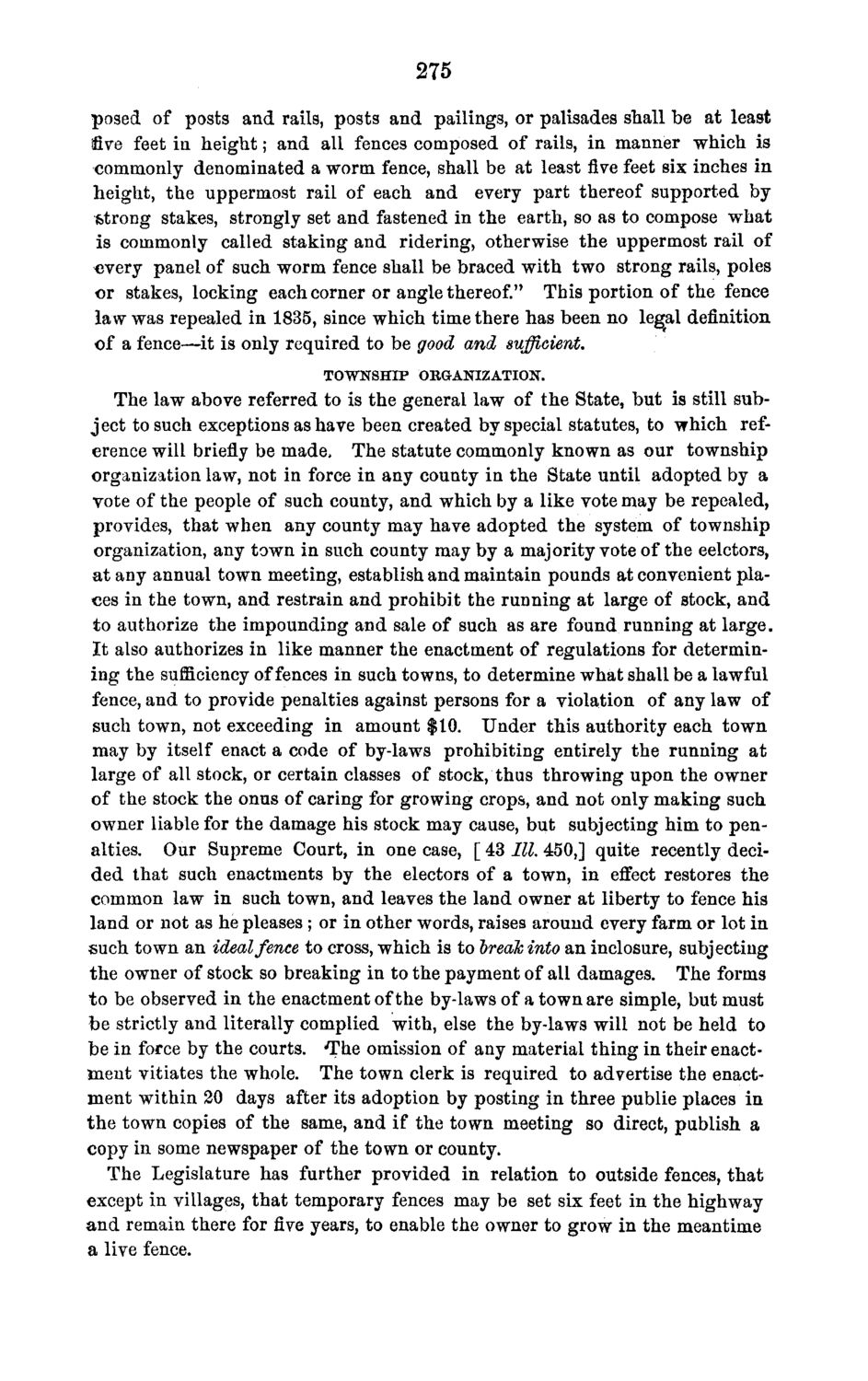| |
| |
Caption: Board of Trustees Minutes - 1870
This is a reduced-resolution page image for fast online browsing.

EXTRACTED TEXT FROM PAGE:
275 posed of posts and rails, posts and pailings, or palisades shall be at least $ive feet in height; and all fences composed of rails, in manner which is commonly denominated a worm fence, shall be at least five feet six inches in height, the uppermost rail of each and every part thereof supported by strong stakes, strongly set and fastened in the earth, so as to compose wThat is commonly called staking and ridering, otherwise the uppermost rail of every panel of such worm fence shall be braced with two strong rails, poles or stakes, locking each corner or angle thereof." This portion of the fence law was repealed in 1835, since which time there has been no legpl definition of a fence—it is only required to be good and sufficient, TOWNSHIP ORGANIZATION. The law above referred to is the general law of the State, but is still subject to such exceptions as have been created by special statutes, to which reference will briefly be made, The statute commonly known as our township organization law, not in force in any county in the State until adopted by a vote of the people of such county, and which by a like vote may be repealed, provides, that when any county may have adopted the system of township organization, any town in such county may by a majority vote of the eelctors, at any annual town meeting, establish and maintain pounds at convenient places in the town, and restrain and prohibit the running at large of stock, and to authorize the impounding and sale of such as are found running at large. It also authorizes in like manner the enactment of regulations for determining the sufficiency offences in such towns, to determine what shall be a lawful fence, and to provide penalties against persons for a violation of any law of such town, not exceeding in amount $10. Under this authority each town may by itself enact a code of by-laws prohibiting entirely the running at large of all stock, or certain classes of stock, thus throwing upon the owner of the stock the onus of caring for growing crops, and not only making such owner liable for the damage his stock may cause, but subjecting him to penalties. Our Supreme Court, in one case, [ 43 III. 450,] quite recently decided that such enactments by the electors of a town, in effect restores the common law in such town, and leaves the land owner at liberty to fence his land or not as he pleases; or in other words, raises around every farm or lot in such town an ideal fence to cross, which is to break into an inclosure, subjecting the owner of stock so breaking in to the payment of all damages. The forms to be observed in the enactment of the by-laws of a town are simple, but must be strictly and literally complied with, else the by-laws will not be held to be in force by the courts, 1?he omission of any material thing in their enactment vitiates the whole. The town clerk is required to advertise the enactment within 20 days after its adoption by posting in three publie places in the town copies of the same, and if the town meeting so direct, publish a copy in some newspaper of the town or county. The Legislature has further provided in relation to outside fences, that except in villages, that temporary fences may be set six feet in the highway and remain there for five years, to enable the owner to grow in the meantime a live fence.
| |